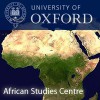The earth compels: Forces of destruction and creation in the history of African popular culture
'Cultural Production in Africa's Extractive Communities' is the sixth research seminar of the ERC project 'Comparing the Copperbelt' based at the University of Oxford. It focuses on the intersection between mining and cultural production in Central, Western and Southern Africa. Mining was one of the most important engines of transformation in Africa's recent social and economic history. Industrial-scale mining - of gold, copper, tin, coal, oil, and diamonds - generated new towns and hurled people together from myriad cultural, linguistic and regional backgrounds. Thus, mining regions have also proved to be important venues of new forms of cultural production. Examples include DRCongo's popular painting, Zambia's psychedelic rock revolution in the 1970s, or Sotho migrant workers' lifela song-poem genre. While certain forms of popular art have been the object of detailed study, e.g. in J.C. Mitchell’s 1956 ethnography of the Kalela dance, many of these studies have tended to be narrow in geographical focus.
This seminar will attempt a more global view and will look at a variety of cultural forms across a variety of regions and time periods. It will integrate analysis of cultural production into regional histories that have more commonly been characterised in structural and material terms, exploring the ways in which processes of cultural, political and economic change found expression in everyday life. Questions to be addressed include: in what ways did new forms of popular art integrate various cultural influences to address social issues specific to the mining context? How does the 21st century mining context, defined by plurality and competing global companies, impact cultural production? How do cultural forms produced in such contexts relate to and compare with those produced in other areas of the country? What can popular art tell us about the lived experiences of the societies that produced it?




